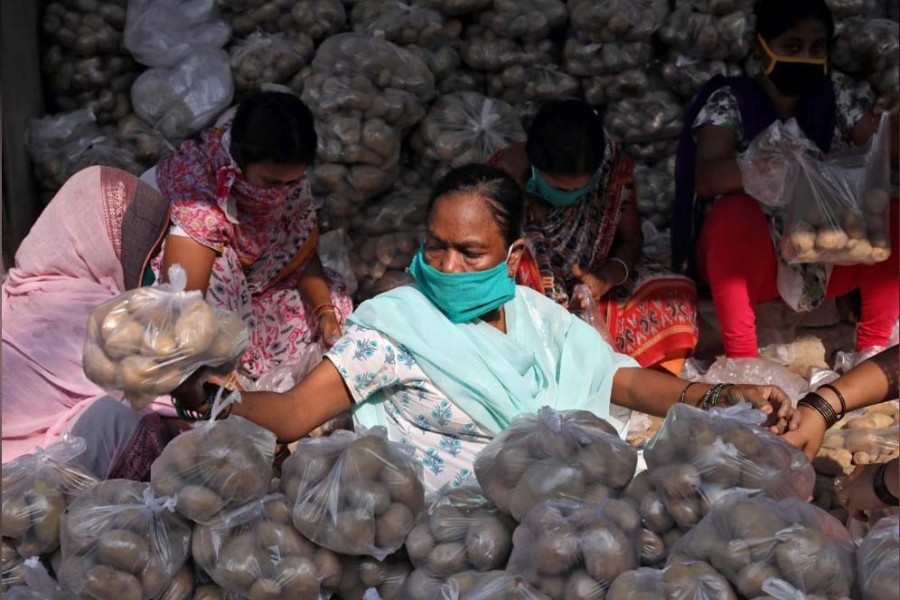
Published :
Updated :

Developing Asia’s already slowing economic growth is set to weaken even more sharply this year, hit by the fallout from the coronavirus pandemic before it bounces back strongly next year, the Asian Develpoment Bank (ADB) said on Friday, reports Reuters.
The Manila-based lender said its baseline forecast called for growth in developing Asia, a group of 45 economies that includes China and India, to slow to 2.2 per cent in 2020 from a previous forecast of 5.2 per cent, matching last year.
“This will be the lowest growth that developing Asia will have seen in 22 years, or since the Asian financial crisis,” said Abdul Abiad, director of ADB’s macroeconomic research division.
For 2021, the region is forecast to recover and grow 6.2 per cent, the ADB said in its Asian Development Outlook report.
It more than halved its growth estimate for China, where the virus surfaced in December, to 2.3 per cent this year from 5.8 per cent previously, citing dismal economic activity in the first two months of the year.
But growth in the world’s second-largest economy is expected to rebound strongly to 7.3 per cent in 2021, the ADB said.
After the health crisis brought China’s economy to a virtual halt in the first quarter, an ever-growing number of countries and territories have reported a spike in infections and deaths, leading to widespread travel bans and stay-at-home orders.
Measures to contain the contagious flu-like virus have hammered the global economy, leading economists to believe the world is heading towards a deep recession.
“This is a public health crisis and that’s what needs to be addressed first, before the situation normalises,” Abiad told Reuters. But in containing the pandemic, governments must ensure “the most vulnerable are not left behind,” he added.
Given the rapidly changing situation, the ADB said it sees total world gross domestic product shrinking between 2.3 per cent to 4.8 per cent, higher than the estimates it made last month.
Yasuyuki Sawada, ADB’s chief economist, said the upper end of the range assumed the pandemic will last for six months and spill over to the broader economy. He said the pandemic could turn into a financial crisis if not contained swiftly.
He said the pandemic could “leave permanent scars” on the global economy and cause a “retreat from globalisation.”
Growth in South Asia’s largest economy, India, is forecast to remain subdued after a sharp slowdown in 2019, with expansion for fiscal year 2020 seen slowing further to 4.0 per cent, before strengthening to 6.2 per cent in fiscal 2021, the ADB said.
Southeast Asia’s growth this year is expected track the weakness in major trading partner China and slow to 1.0 per cent from 4.4 per cent last year, but regain momentum and finish next year with growth of 4.7 per cent.
“No economy in Asia will escape the pandemic unscathed,” Sawada said in an online media briefing. “But strong underlying economic fundamentals would mean, we don’t see a repeat of a long recovery from the Asian financial crisis or the global financial crisis”.
The ADB slightly raised its inflation forecast for developing Asia to 3.2 per cent from 3.1 per cent previously, but declining food prices in the latter part of the year should lead to a slower inflation rate of 2.3 per cent next year.


 For all latest news, follow The Financial Express Google News channel.
For all latest news, follow The Financial Express Google News channel.